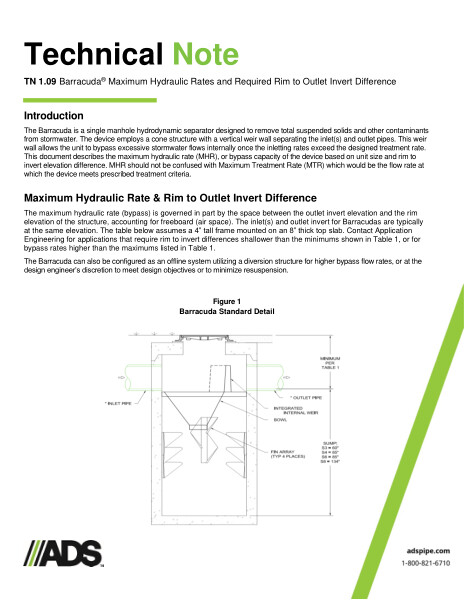TN 1.09 Barracuda Max Hydraulic Rate and Rim-Outlet Elevations
Filename:
TN 1.09 Barracuda Max Hydraulic Rate and Rim-Outlet Elevations .pdf

This document is the TN 1.09 Barracuda Max Hydraulic Rate and Rim-Outlet Elevations. It explains the manhole function with standard detail included.
The Barracuda is a single manhole hydrodynamic separator designed to remove total suspended solids and other contaminants from stormwater. The device employs a cone structure with a vertical weir wall separating the inlet(s) and outlet pipes. This weir wall allows the unit to bypass excessive stormwater flows internally once the inletting rates exceed the designed treatment rate.
This document describes the maximum hydraulic rate (MHR), or bypass capacity of the device based on unit size and rim to invert elevation difference. MHR should not be confused with Maximum Treatment Rate (MTR) which would be the flow rate at which the device meets prescribed treatment criteria.
The maximum hydraulic rate (bypass) is governed in part by the space between the outlet invert elevation and the rim elevation of the structure, accounting for freeboard (air space). The inlet(s) and outlet invert for Barracudas are typically at the same elevation. The table below assumes a 4” tall frame mounted on an 8” thick top slab.
The Barracuda can also be configured as an offline system utilizing a diversion structure for higher bypass flow rates, or at the design engineer’s discretion to meet design objectives or to minimize resuspension.
A Barracuda standard detail and maximum hydraulic rate & rim to outlet invert difference charts are included.
